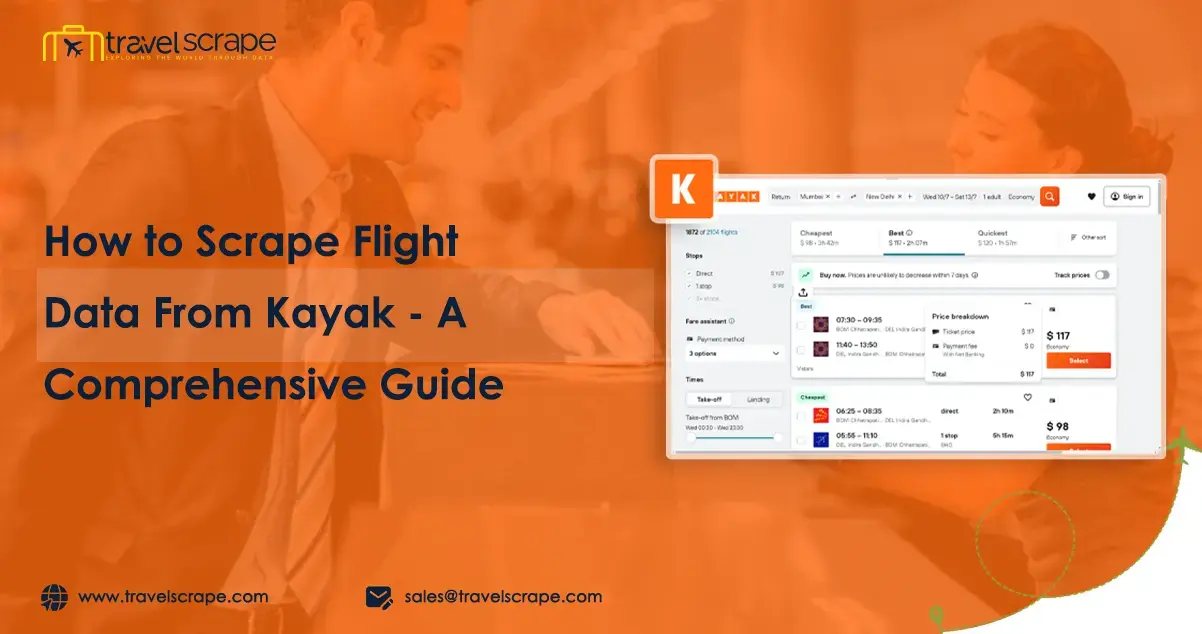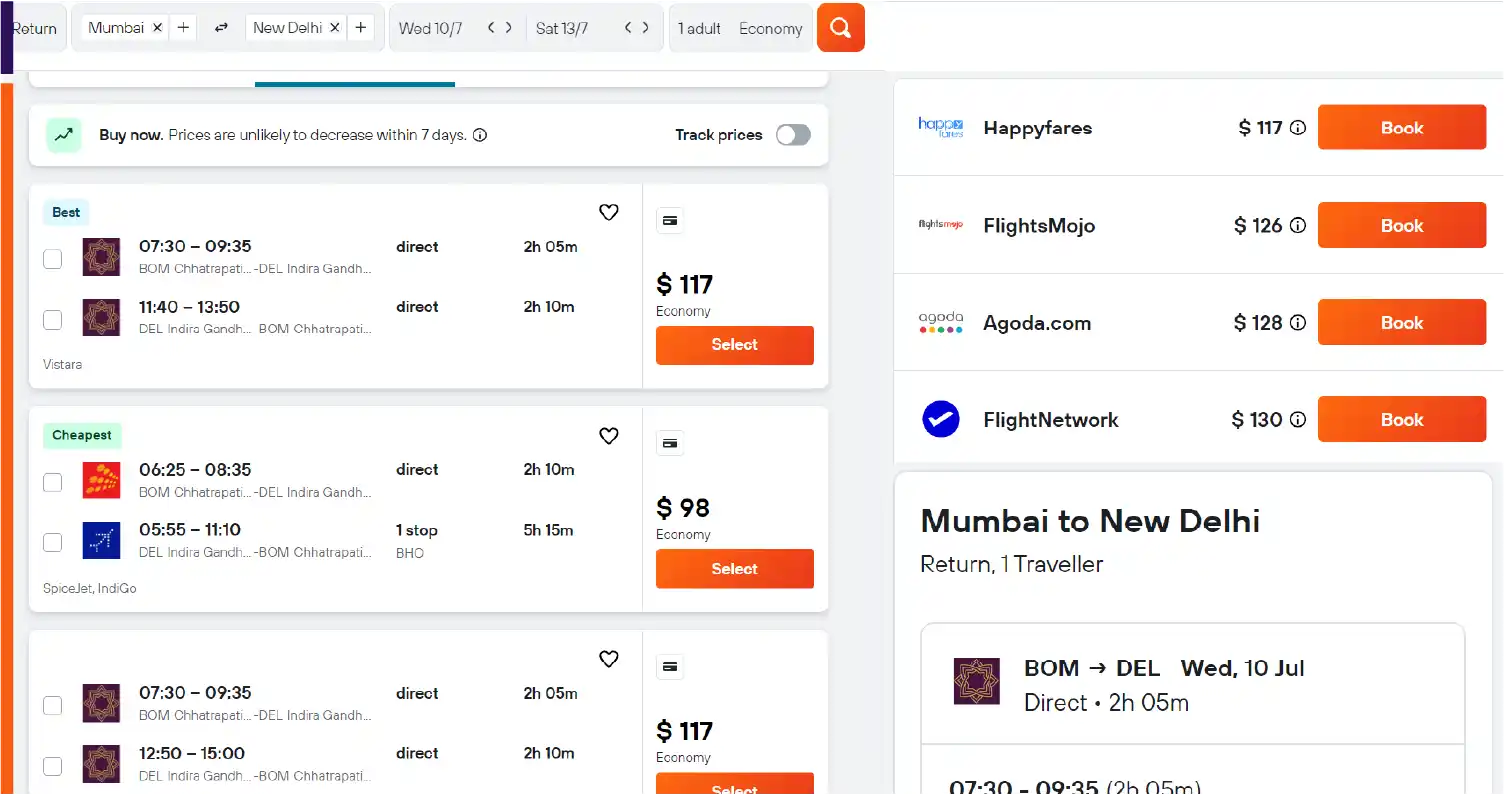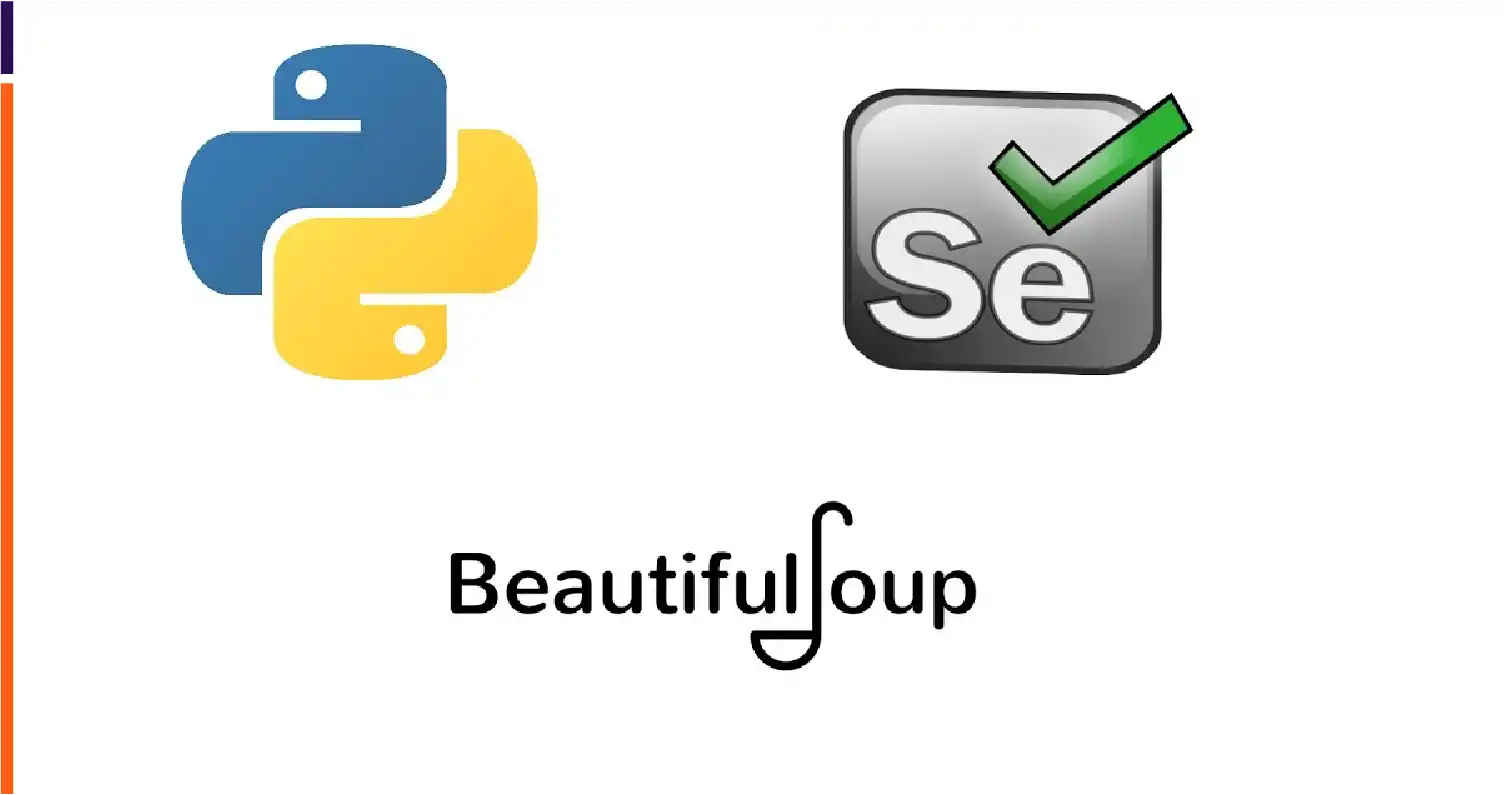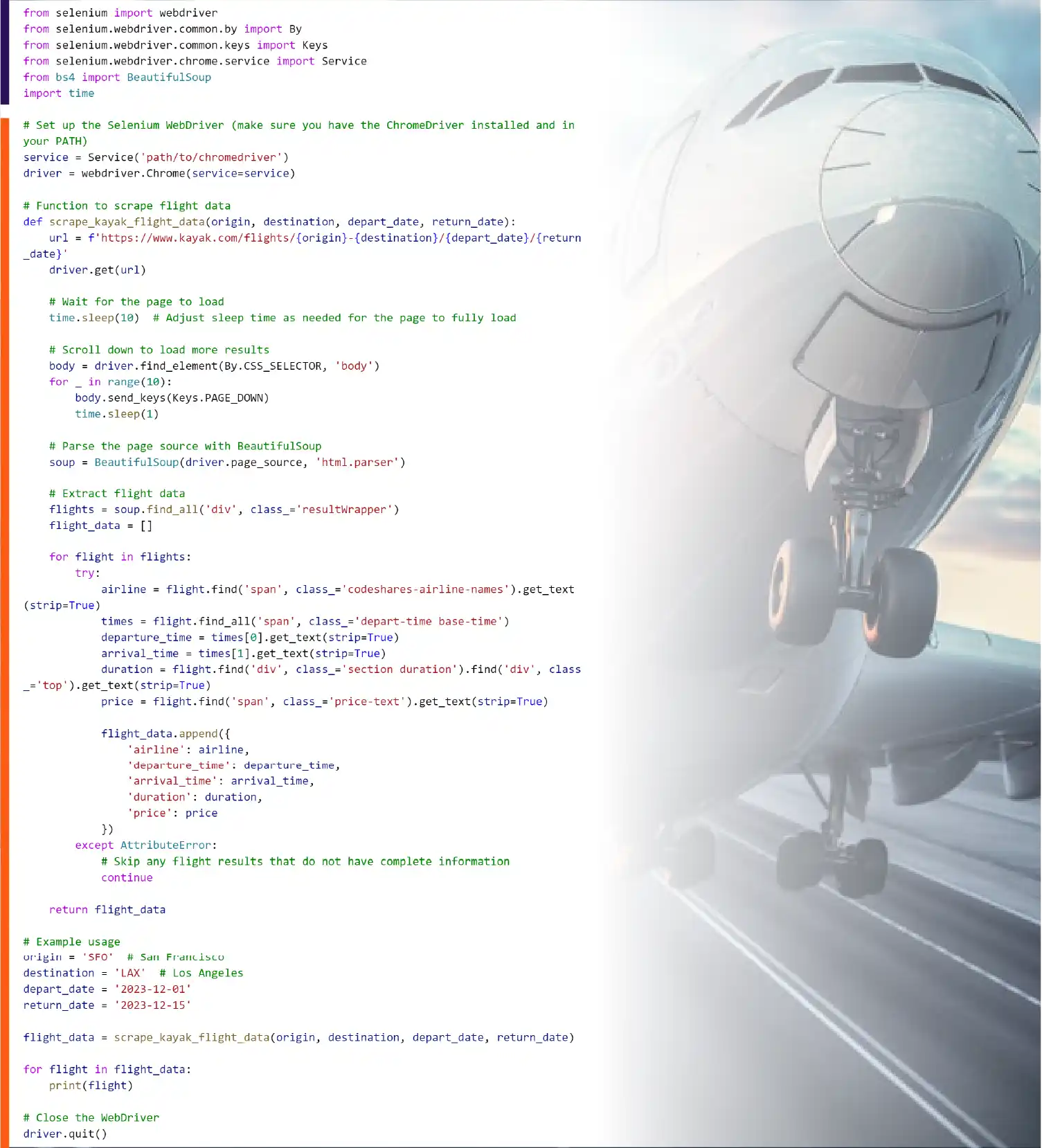How to Scrape Flight Data From Kayak - A Comprehensive Guide

Introduction
In today's travel landscape, securing optimal flight deals is crucial. Kayak, a renowned travel search engine, aggregates extensive flight information from diverse airlines and booking platforms. Scrutinizing Kayak's flight data through scraping unveils invaluable insights into pricing, routes, and availability. This detailed guide delves into the step-by-step process of scraping flight data from Kayak. By leveraging techniques such as web scraping, you can extract precise details, including Kayak flight prices, enabling informed travel decisions. Navigate through the intricacies of scraping Kayak flight price data to access comprehensive airline flight price data, empowering travelers with the knowledge needed to seize the best deals. Whether you're a seasoned traveler or a novice explorer, mastering the art of web scraping flight data from Kayak opens doors to a world of affordable travel opportunities.
Why Scrape Kayak Flight Price Data?

To scrape Kayak flight price data offers numerous advantages for travelers, researchers, and businesses alike. In the fast-paced world of air travel, having access to comprehensive and real-time flight pricing information is essential for making informed decisions. Here's it is invaluable to scrape Kayak flight price data:
Price Comparison: With Kayak aggregating flight information from various sources, scraping its data allows users to compare prices across multiple airlines and booking platforms. This enables travelers to find the most cost-effective options for their desired routes and travel dates.
Real-time Updates: By scraping Kayak flight data, users can obtain real-time updates on flight prices, ensuring they capture any sudden changes or promotions. This timeliness is especially crucial for securing the best deals in a dynamic market.
Route Analysis: Scraping Kayak flight data provides insights into available routes and their respective prices. Researchers and businesses can analyze this data to identify popular travel routes, emerging trends, and market demand, informing strategic decisions and route planning.
Customized Alerts: With scraped Kayak flight price data, users can set up customized alerts for specific routes and price thresholds. This proactive approach allows travelers to be notified when favorable deals become available, maximizing their savings.
Competitive Intelligence: Businesses in the travel industry can benefit from scraping Kayak flight data to gain competitive intelligence. Analyzing competitors' pricing strategies and market positioning can help companies refine their own pricing models and stay ahead in the market.
Market Research: Researchers and analysts can utilize scraped Kayak flight data for market research purposes. By examining historical pricing trends and consumer behavior, they can gain valuable insights into market dynamics, pricing elasticity, and seasonal fluctuations.
Enhanced User Experience: Integrating scraped Kayak flight price data into travel websites or applications can enhance the user experience by providing up-to-date pricing information and facilitating seamless booking processes. This improves customer satisfaction and loyalty.
Price Prediction: Advanced data analysis techniques applied to scraped Kayak flight data can facilitate price prediction models. By identifying patterns and factors influencing price fluctuations, users can anticipate future price movements and optimize their booking strategies accordingly.
Scraping Kayak flight price data offers a multitude of benefits, including price comparison, real-time updates, route analysis, customized alerts, competitive intelligence, market research, enhanced user experience, and price prediction. Whether you're a traveler seeking the best deals or a business aiming to stay competitive in the travel industry, harnessing the power of scraped Kayak flight data can be a game-changer.
Getting Started with Web Scraping Flight Data

Before we dive into scraping flight data from Kayak, you'll need to set up your environment and tools:
Python: A programming language commonly used for web scraping.
Beautiful Soup: A Python library for parsing HTML and XML documents.
Requests: A Python library for sending HTTP requests.
Selenium: (Optional) A tool for automating web browsers, useful for scraping dynamic content.
Step-by-Step Guide to Scrape Flight Data from Kayak
Inspect Kayak Website: Use your web browser's developer tools to inspect the HTML structure of Kayak's flight search results page.
Identify Target Data: Determine which elements contain the flight data you want to scrape, such as flight prices, departure/arrival times, airlines, and more.
Send HTTP Request: Use the Requests library in Python to send an HTTP GET request to Kayak's flight search results page.
Parse HTML: Use Beautiful Soup to parse the HTML content of the response and extract the desired flight data.
Extract Flight Data: Write code to extract flight prices, departure/arrival times, airlines, and any other relevant information from the parsed HTML.
Store Data: Store the extracted flight data in a structured format such as a CSV file or database for further analysis.
The Python Code
Scraping flight data from Kayak can be a complex task due to the website's dynamic content and anti-scraping measures. However, here's a basic example using Selenium and BeautifulSoup to get you started. This example will scrape some flight data from Kayak's search results page. Make sure you have the necessary libraries installed:
pip install selenium beautifulsoup4Here's a simple Python script to scrape flight data from Kayak:

Explanation
Setup: The script uses Selenium to automate browser interactions and BeautifulSoup to parse HTML content.
URL Construction: Constructs the Kayak search URL based on origin, destination, departure, and return dates.
Page Loading: Opens the URL in a Chrome browser and waits for the page to load.
Scrolling: Scrolls down the page to load more flight results.
Parsing: Uses BeautifulSoup to extract flight details such as airline, departure time, arrival time, duration, and price.
Output: Prints the extracted flight data.
Important Notes:
WebDriver: Ensure you have the ChromeDriver installed and its path correctly specified.
Delays: Adjust sleep times based on your internet speed and Kayak's page load times.
Dynamic Content: Kayak uses JavaScript to load flight results, so ensuring all content is loaded before parsing is crucial.
Anti-Scraping Measures: Kayak may block your IP if too many requests are made in a short period. Be respectful of their terms of service and avoid excessive scraping.
This script serves as a starting point. Depending on Kayak's page structure changes, you may need to adjust the selectors and parsing logic.
Conclusion
Kayak flight price data scraping is a powerful way to access valuable information about flight prices, routes, and availability. By following the steps outlined in this guide and adhering to best practices, you can gather actionable insights to optimize your travel planning and find the best flight deals. Kayak flight price data scraping enables you to compare airline prices, analyze route availability, and stay updated with real-time changes. Additionally, you can extract flight prices data from Kayak to create customized alerts, giving you an edge in securing the best deals. Expanding your scraping efforts to mobile travel app data and other travel aggregators can further enhance your data collection, providing a comprehensive view of the travel market. By leveraging web scraping flight data techniques from Travel Scrape, you can turn raw airline flight price data scraping into a strategic tool for informed decision-making and superior travel planning! To scrape mobile travel app data, contact us now!